Modules
- Modelling and Simulation of Physical and MAC Layer for WLAN (2.4 GHz & 5 GHz) for IEEE 802.11n & 802.11ac.
- MAC layer: Rate adaptation algorithms
- Coexisting WLAN networks
- Downlink Performance of OFDMA 802.11ax WLAN Networks in dense deployments.
Modeling and Simulation of Physical and MAC Layer for WLAN
Standards considered: 802.11n & 802.11ac at 2.4 GHz and 5 GHz
Performance metrics
–Throughput
–Latency
–Packet Error Rate
–Range
Models for various scenarios
–Scenario 1: Client at different distances from an Access Point
–Scenario 2: Client in motion WRT a single Access Point
–Scenario 3: Client in motion while covering multiple Access Points
Simulation Setup in MATLAB
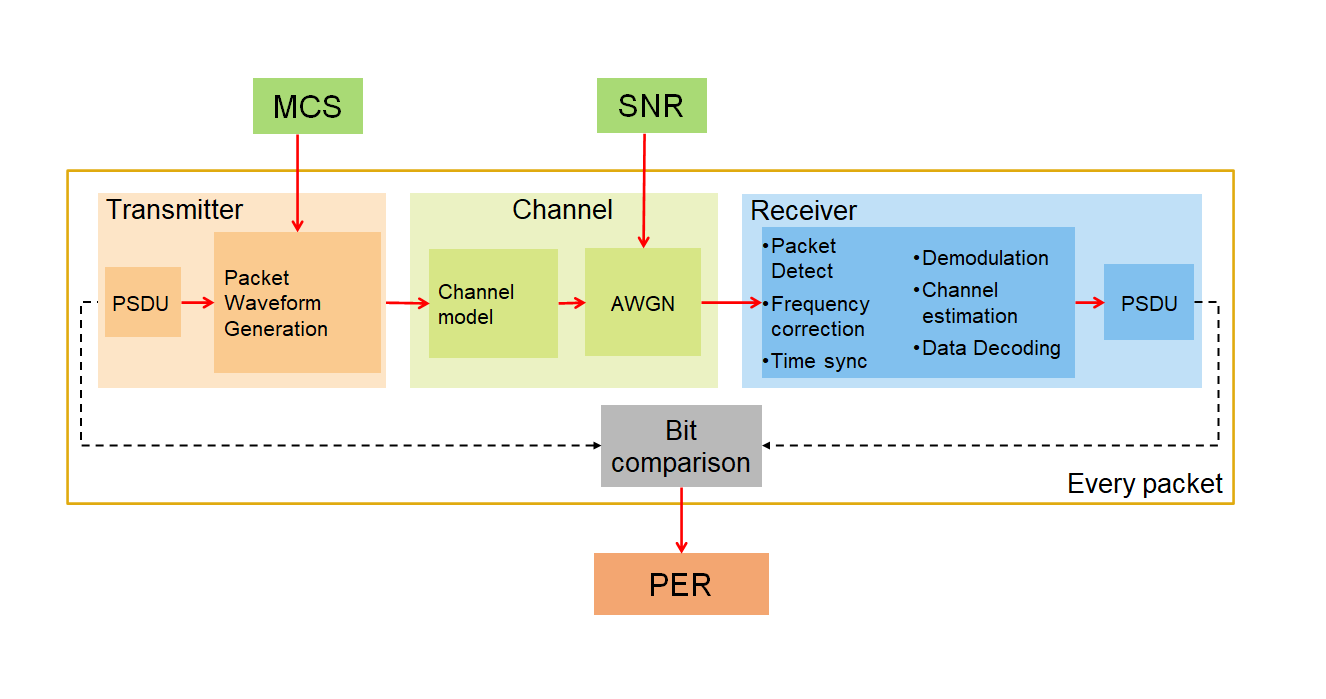
MAC layer: Rate adaptation algorithms
- Rate adaptation is used to deal with variations in channel and interference
- Transmitter adapts its modulation and coding scheme (MCS) to get different rates
- A crucial algorithm that affects performance of Wi-Fi networks
- Factors that affect throughput:
- Dynamic nature of channel
- Interference from other WiFi transmitters
- Heterogeneous receiver capability
- Goal: Maximize throughput while containing packet error rate
Comparison of DRCA, Ideal RAA, and Minstrel:
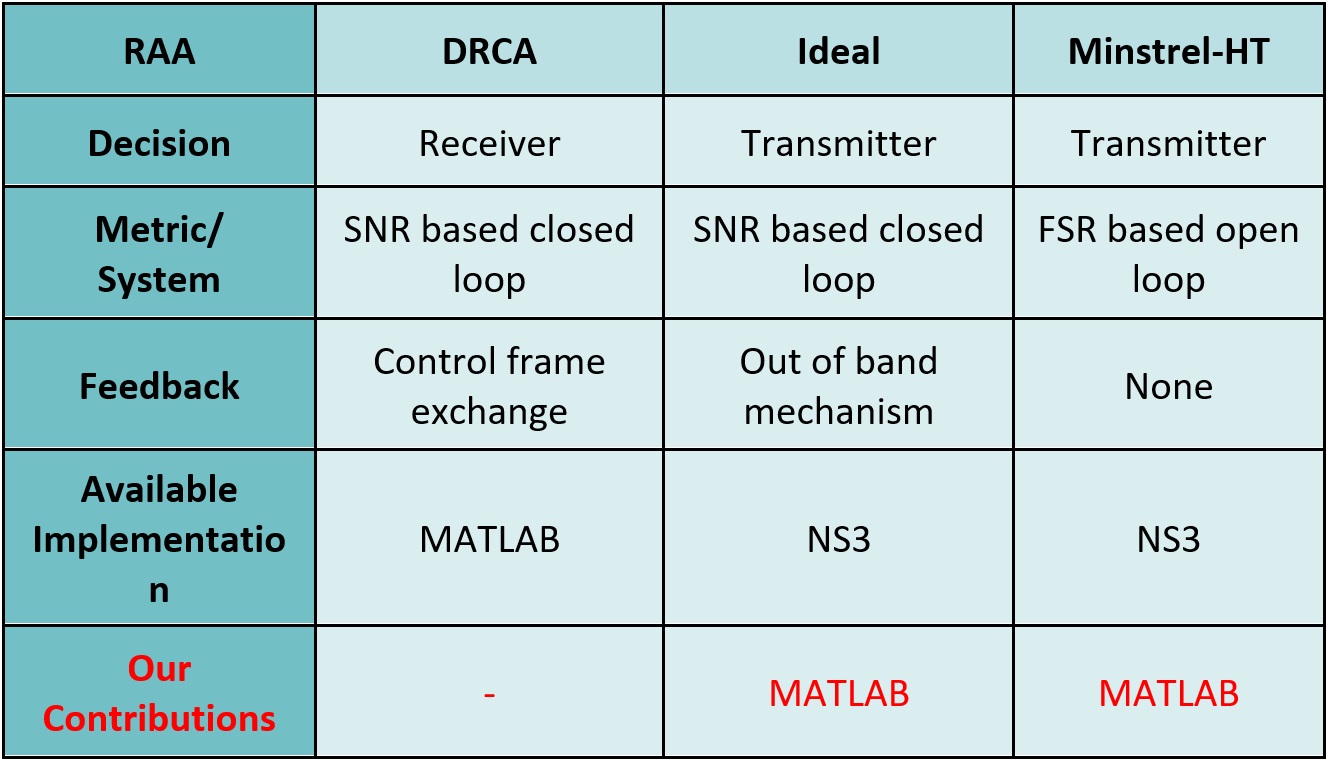
Matlab’s Dynamic Rate Control Algorithm (DRCA):
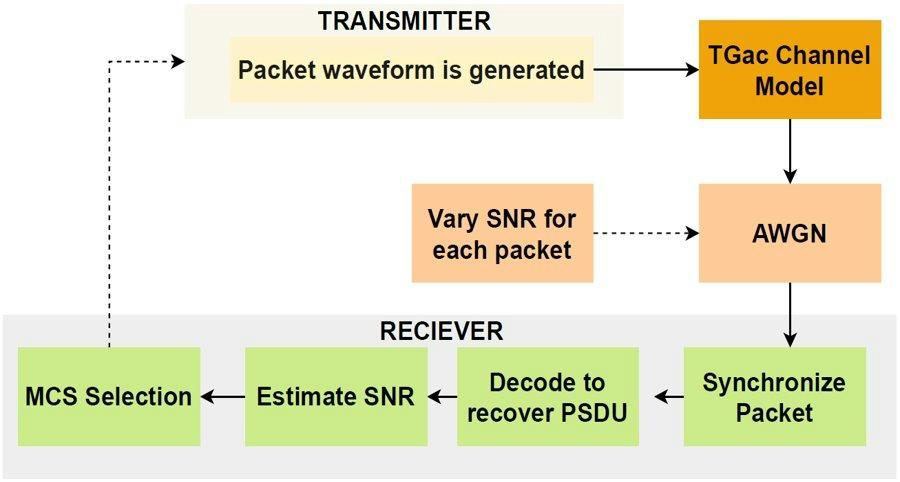
Ideal Rate Control Algorithm:
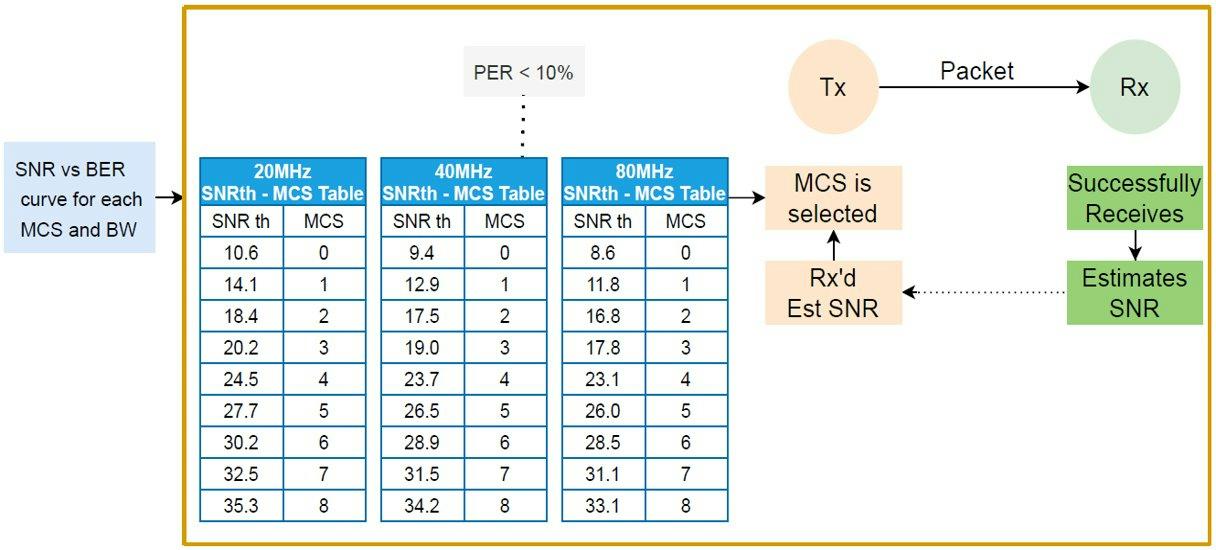
Benchmarking: Ideal vs. DRCA (802.11ac):
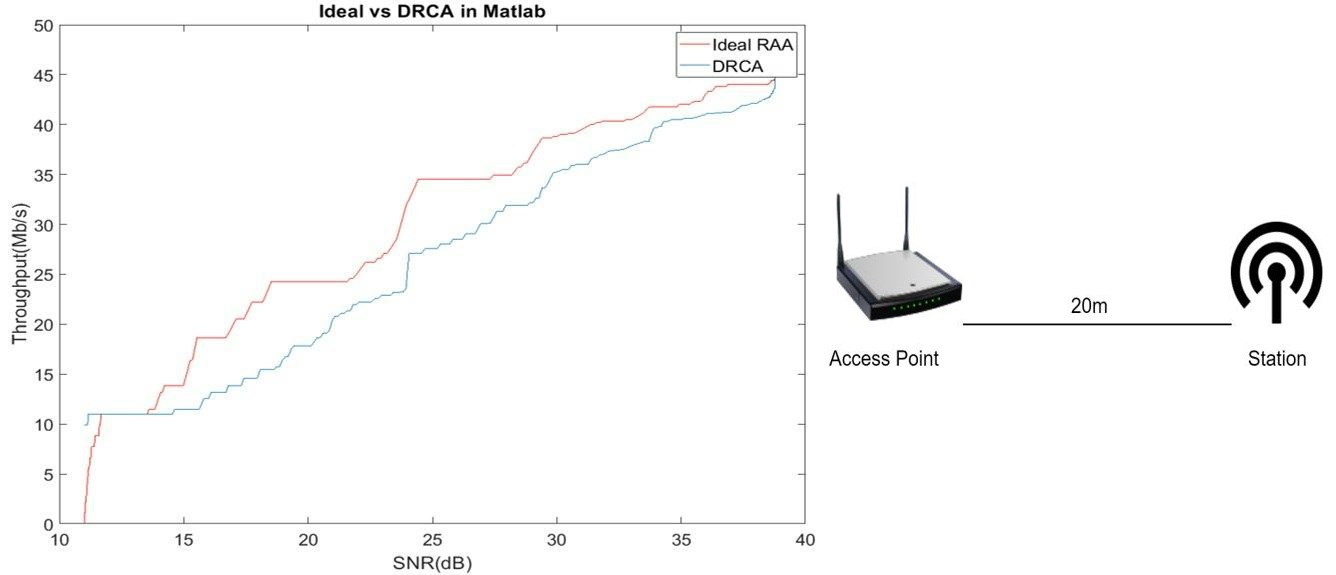
Minstrel-HT Rate Control Algorithm:
- Evaluating the Matlab implementation of Minstrel-HT with a reference known as MinstrelHTWifiManager from NS3.
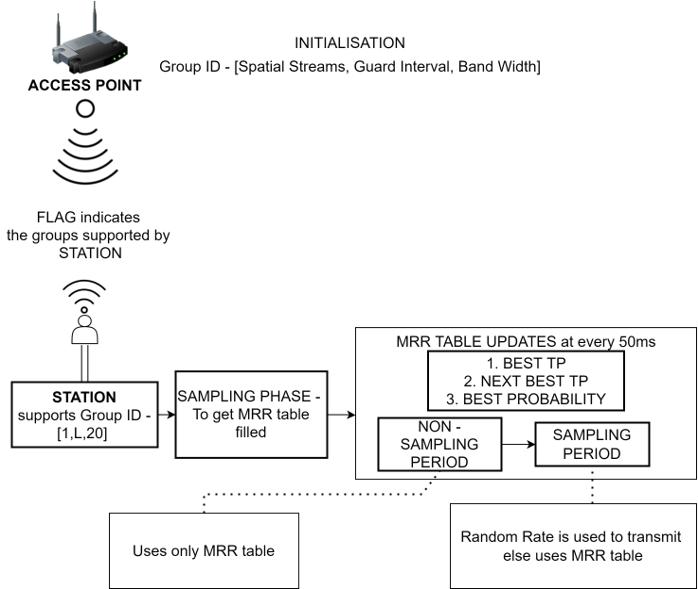
- Response of algorithm (MCS selection and MRR update) to packet failures/success given the same initialization and randomisations were matched.

MAC layer: Rate adaptation algorithms
- WLAN co-existence analysis inside a plane
- Analysing throughput between interfering APs
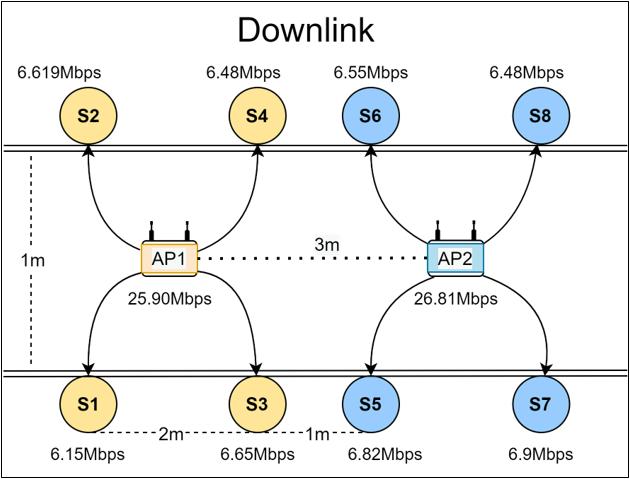
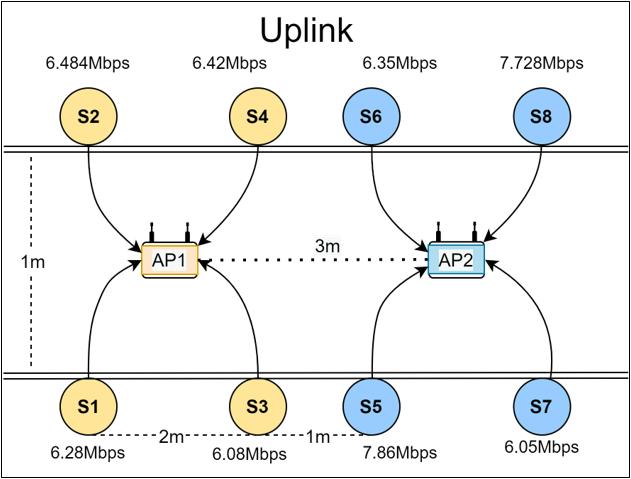
- Minstrel-HT integration with multi-node system-level simulations

- Simulated Rate adaptation in an increased number of WLAN networks
Downlink Performance of OFDMA 802.11ax WLAN Networks in dense deployments
- Gain of the MU-OFDMA feature of the 802.11ax standard provide
- 11ax vs 802.11n simulations: Implemented in Matlab
- 11n vs. 802.11ax
- Throughput-based scheduling for extreme fairness
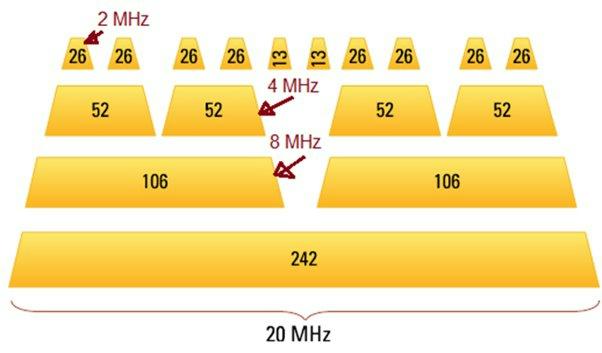
- Scheduled access as opposed to contention-based access.
- Different RUs for different STAs depending on channel conditions.
- 11ax: OFDMA for MU transmissions
- Compare per-node throughput and latency
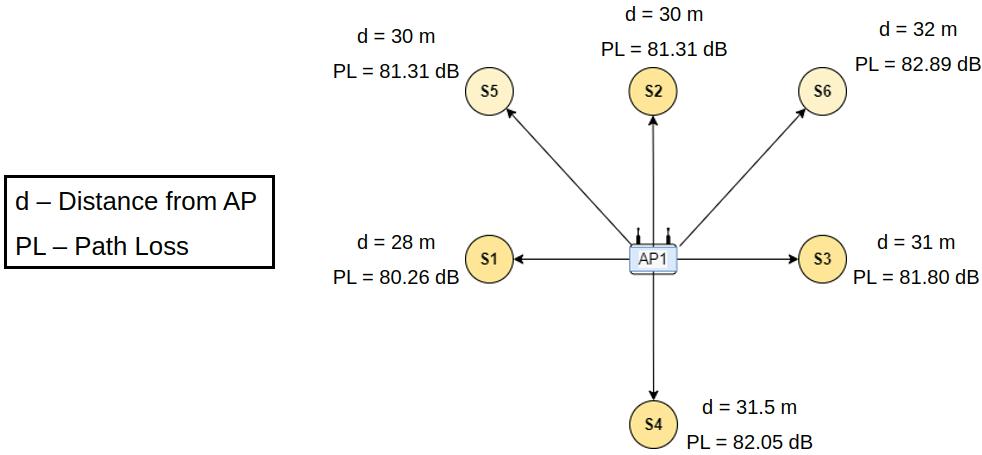
- Round-robin vs. throughput-based OFDMA scheduler
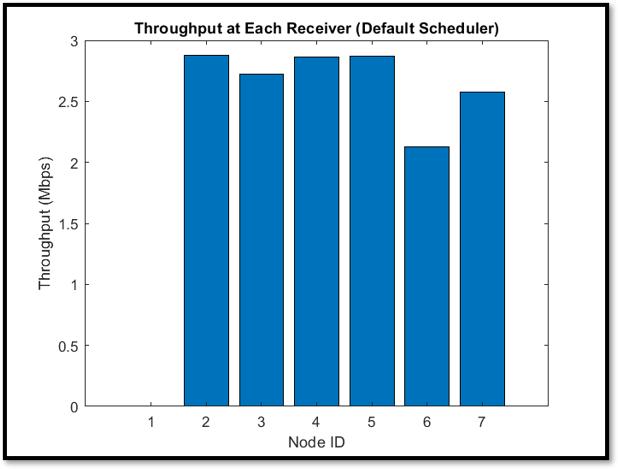

Ongoing and future work:
- Default round-robin scheduler in Matlab:
- RUs allocated based on the number of previous transmissions.
- STAs with the least number of transmissions at the start of each frame are allocated RUs.
- Throughput-based scheduler:
- RUs allocated based on the running value of throughput.
- STAs with the least throughput at the start of each frame are allocated RUs.
- Scheduled access vs. contention-based access:
- Allocating RUs based on SINR per RU for each STA.
People
Other Team members: Amol Bhindwale, Rushabha Balaji, Sourav Mukherjee, Vinay U Pai




